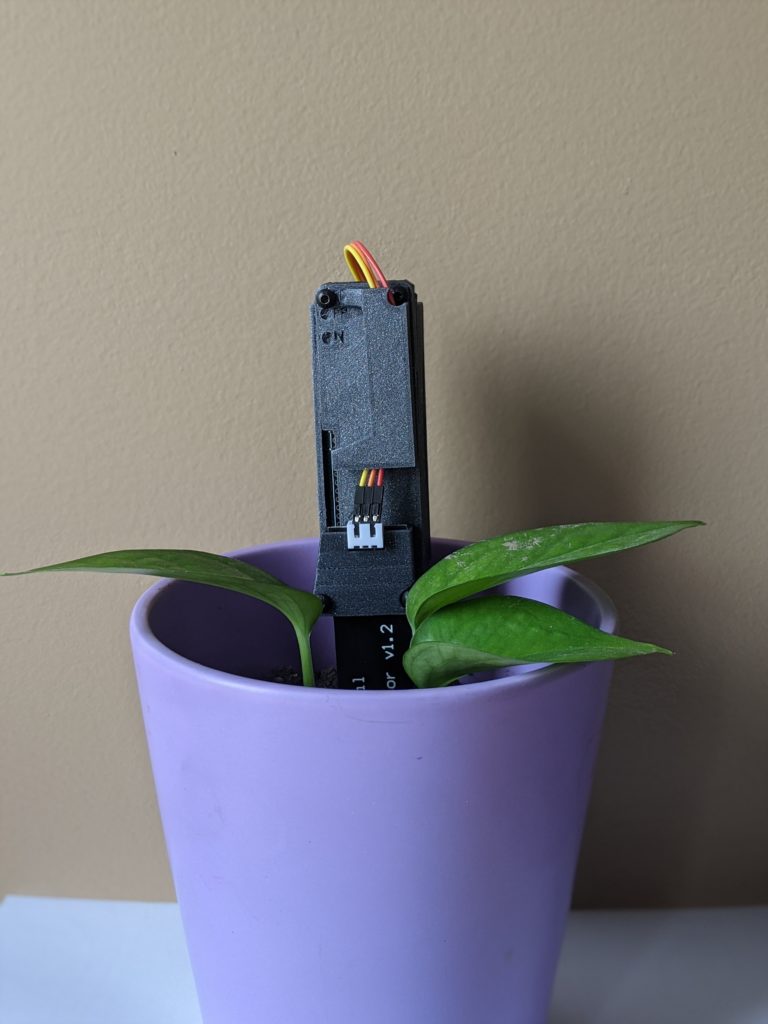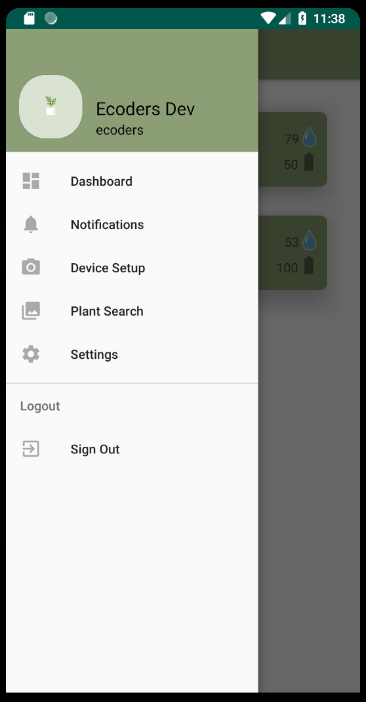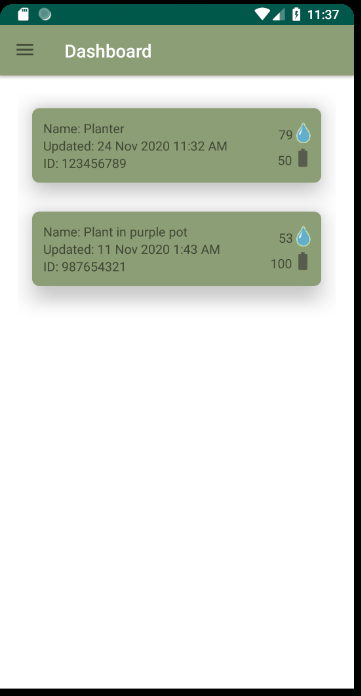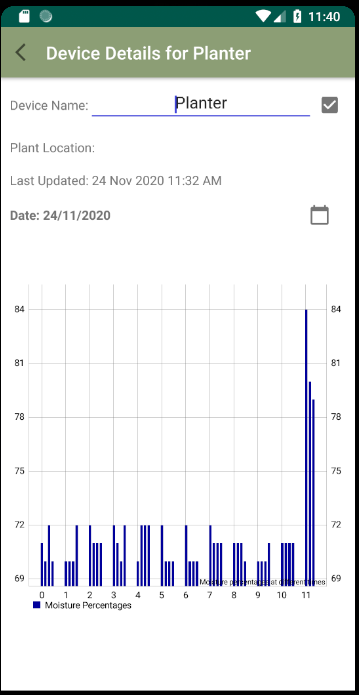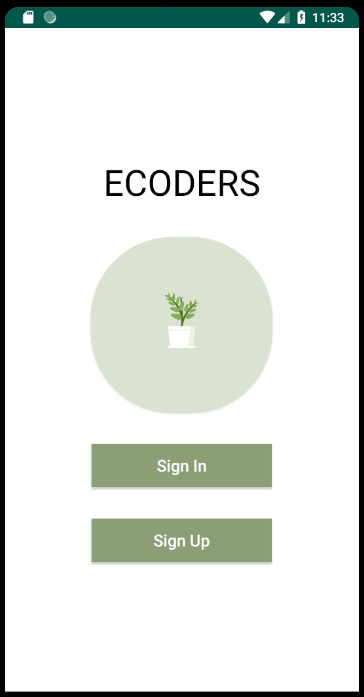- Project title
Soil Moisture Sensor Credits
- Group name
Ecoders
- Sheridan program name
Computer Systems Technology - Software Development and Network Engineering
- Release Date
12/08/2020
- Project Description
Our water moisture sensor is a device that will be placed in the soil beside the plant to determine the moisture levels of the soil, which can be read by the user in an app associated with the device. The app provides the user the ability to select the type of plant they will be growing to determine the specific requirements that plant needs in order to flourish. The user is able to view the data retrieved from the device in either a list or graphical representation. Once the moisture levels in the soil falls below a certain threshold, the app will remind that user to water their plant.
For the device we have used an ESP8266 board with an 18650 battery slot which is attached to the soil moisture sensor, We used the Arduino IDE to code the ESP board. For the mobile application we have used Android Studio We have used GoLand IDE, Kubernetes, Docker, and Node for the Web API.
Currently our project is bug free and user friendly UI. It is fully functional and has a portable and interesting device design. For the future we are planning to upgrade the microcontroller, work more on the UI functionality, market the device to retail stores and to include the iOS mobile application as well.
- Project background/history
The history of our project starts in our first semester of Capstone where we were brainstorming ideas on products / applications that we could pitch that would be interesting. We were thinking about using any type of hardware that could send data to a server which could then be displayed in our application. We started with ideas like RFID tags, GPS trackers for packages and then we landed on the idea of a soil moisture sensor.
It started off very basic with buying multiple different arduino devices, different types of moisture sensors. And seeing what worked. Some arduinos did not have wifi modules so we bought wifi modules for them, but wiring it up proved to be more difficult. Then we found boards with integrated wifi modules and then from there we tried to narrow down the best module we could use that would suit our project. From there we were able to bring our project to its current state.
- Project features
- Website
- Application
- Wifi Based Arduino Device
- Graph to Display Device Data
- 3D Printed Case for the device
- Additional information
Each team Member in our group has amazing team building, time management, multitasking, decision making, and problem solving skills because of which we are able to accomplish our goals to build our final product. That is, the Soil Moisture Sensor.
May 1 2020

